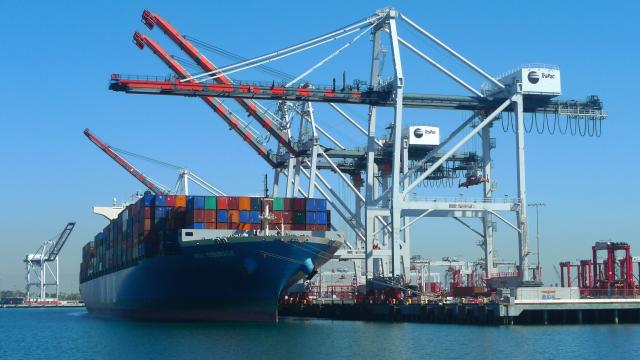If you live anywhere in the US, chances are that you have a product in your home right now that came through the Port of Los Angeles. The largest port in the Western hemisphere handles about a quarter of all cargo distributed throughout the country — about $US1 billion a day. Now LA is working to make it the most environmentally responsible port as well. But it hasn’t been easy.
A massive port

The Battleship USS Iowa, the Vincent Thomas Bridge, the fourth largest bridge in California, and cranes waiting to unload cargo.
There’s only one way to really take in the scale of the port, a 7500-acre site with a staggering 70km of waterfront: From a window seat of a plane departing from LA. I got the second-best perspective: The deck of a boat that can travel into each berth and ridiculously close to the docked megaships. I spent a morning taking in breathtaking harborside views of the technicolor containers stacked like blocks by cranes that hover above like skeletal AT-ATs.
What’s in all those containers? About half of the cargo coming in — some $US285 billion worth — comes from China and Hong Kong, bearing furniture, auto parts, fashion, and electronics. But interestingly, we’re not exporting Made in America consumer goods, for the most part. The containers leaving LA are transporting waste paper, animal feed, and scrap metal.
Yes, we are shipping scrap metal across the Pacific Ocean! In many ways the Port of LA is hosting the largest and most expensive international recycling system in the world.
Globally, LA is the 16th largest port in the world by volume, but when combined with the adjacent Port of Long Beach, it becomes the ninth. This makes the entire operation able to yield some real substantial impact, especially when it comes to its environmental vision, which the Port is now sharing with other shipping entities worldwide.
A greener mandate

The historic tuna canneries still dot the waterfront (now they make cat food).
The century-old port began as a fishing village, but the Port began positioning itself for global trade as early as 1917, after the Panama Canal opened. This was followed by decades of explosive growth, much of it unchecked when it came to preserving the relationship to the surrounding city and the Port’s unique marine environment.
After the port was successfully sued by several environmental groups who claimed pollution from the port was directly responsible for releasing cancer-causing agents that were detrimental to the health of nearby residents, the Clean Air Action Plan and Clean Truck Programs were passed to slash emissions and improve the air.
A $US50 million fund was created for the port to make changes that would improve health for local residents. An era of exceptional environmental reform began.
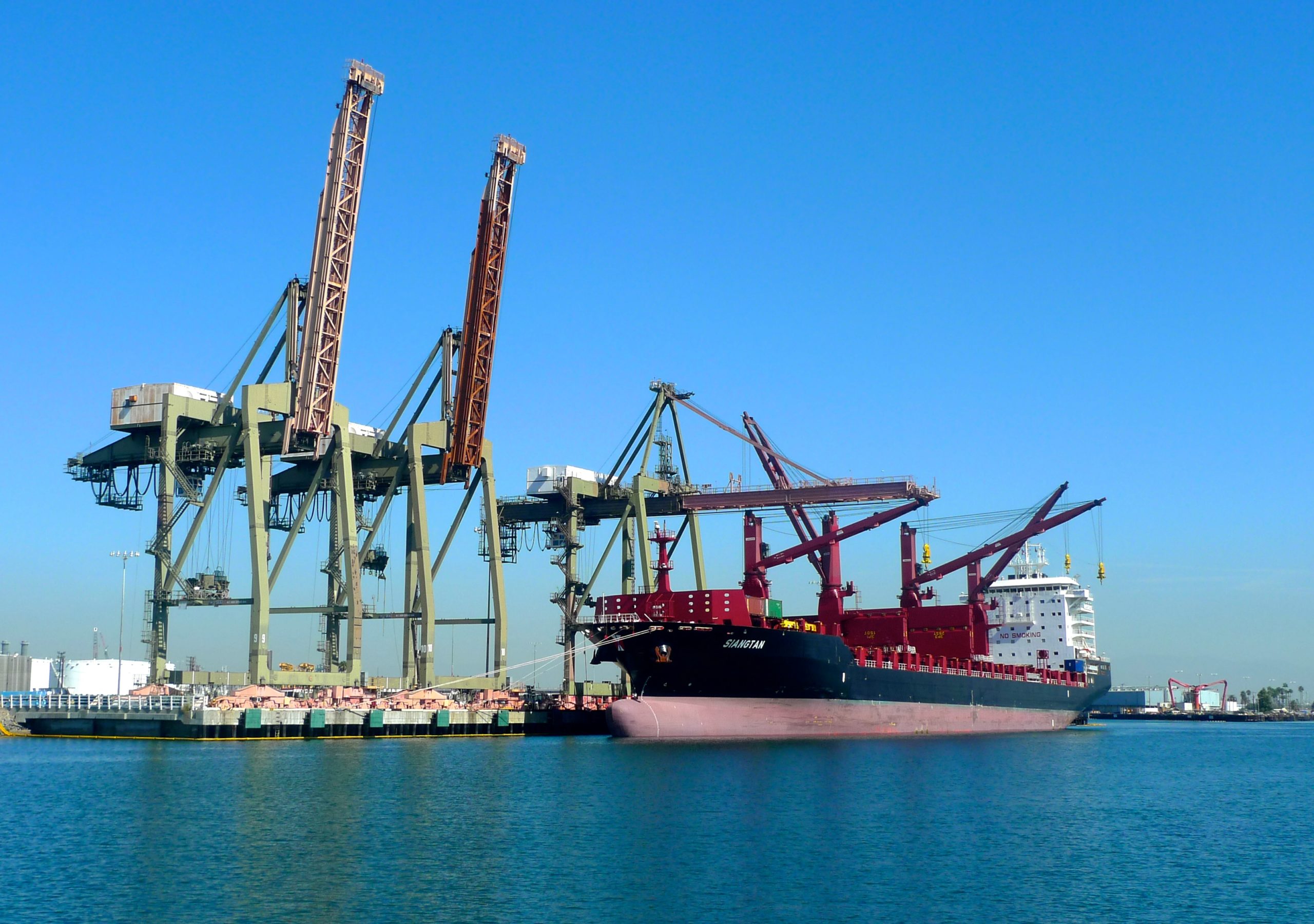
Empty ships like this used to need to run their engines in the harbour, but now they can plug into the Port’s power grid.
The biggest polluters — not surprisingly — were the ships themselves, which spent hours idling in the harbour as they loaded and unloaded their cargo, churning through diesel fuel that dirtied the air and the water. (This was illustrated to great effect during a recent labour dispute which turned the Pacific Ocean into a container ship parking lot.) So the Port built its own electrical power grid, dubbed the Alternative Maritime Power (AMP) program.
With this mini-grid, the ships can shut off their engines and plug in to the port’s own energy source. This is probably one of the most innovative ideas, which has since been adopted by other ports, like Shanghai.
Other simple changes were made. The thousands of trucks that provided ground support at the port were in some cases several decades old and dirty gas-guzzlers — this was essentially where trucks would go to die. The Clean Truck Program mandated that all vehicles needed to be new trucks that would adhere to the most stringent emissions standards, using clean diesel or electric propane. There’s even a version of a clean “truck” in the water: A hybrid tugboat developed by the Port of LA.
Within a few years the air and the water began to transform. Almost a decade after CAAP’s launch, according to port environmental reports, diesel particles have dropped 79 per cent, nitrogen oxide by 56 per cent, and sulfur oxide by 88 per cent. Dolphins and sea lions (I saw plenty of both) returned to the harbour. Now, there’s a beach at the center of the Port where the water is clean enough to swim.
Automation for conservation
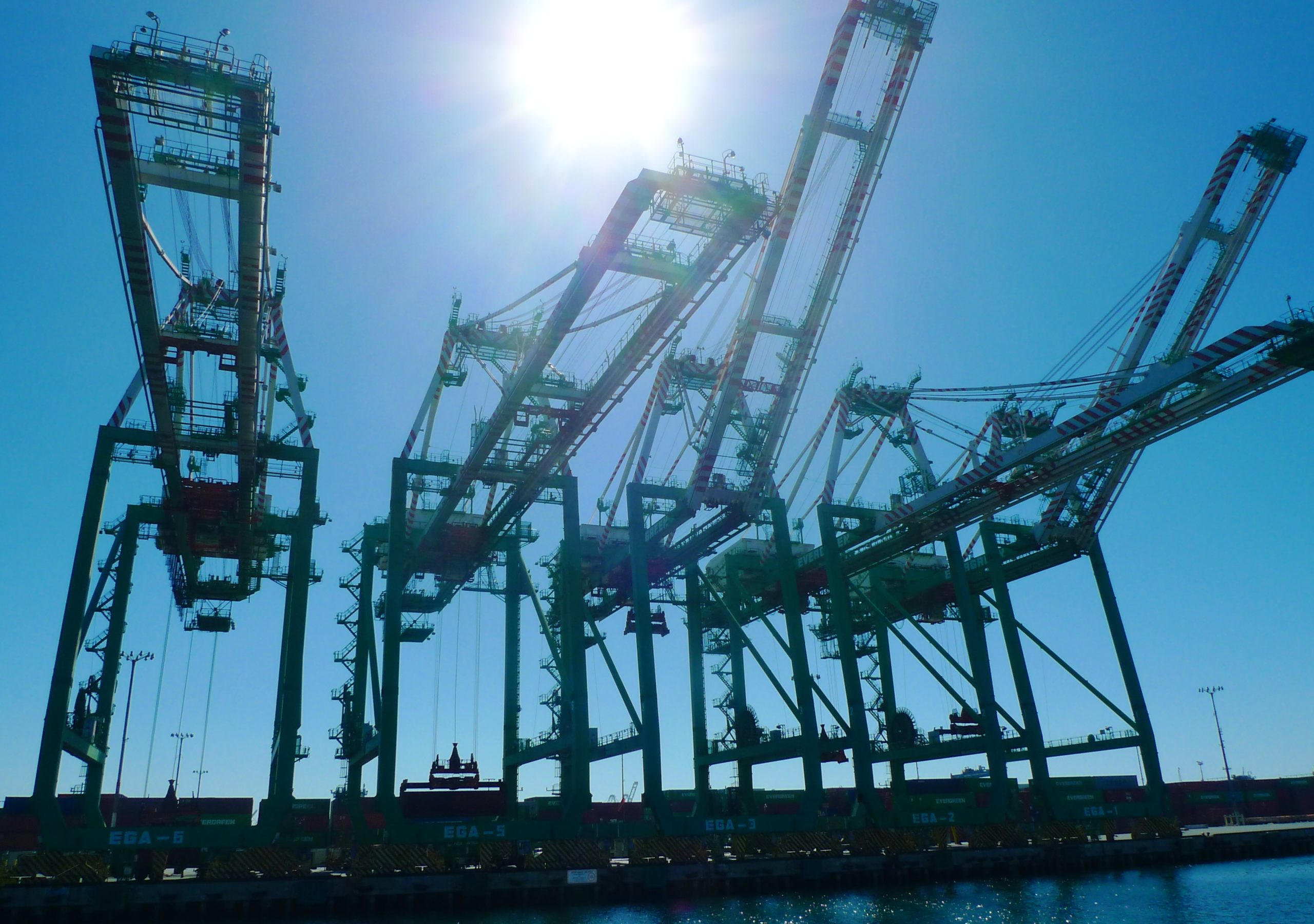
TraPac’s cranes are fitted with the new automated system that cuts the amount of time needed to unload ships.
After staunching the pollutants directly entering the region from ships and trucks, the port looked at a ways to conserve energy overall. And the best way to save energy in shipping is to do it faster. Enter the robotic cranes.
Now, the solution is not erasing humans completely — crane operators still have one of the most coveted jobs in the shipping process, earning $US250,000 per year — but automating as much of the container transport process as possible. So as a container nears the ground, there’s a handoff from human to computer, which guides the container with a series of magnets embedded into the cement dock to help it land more accurately on its target.
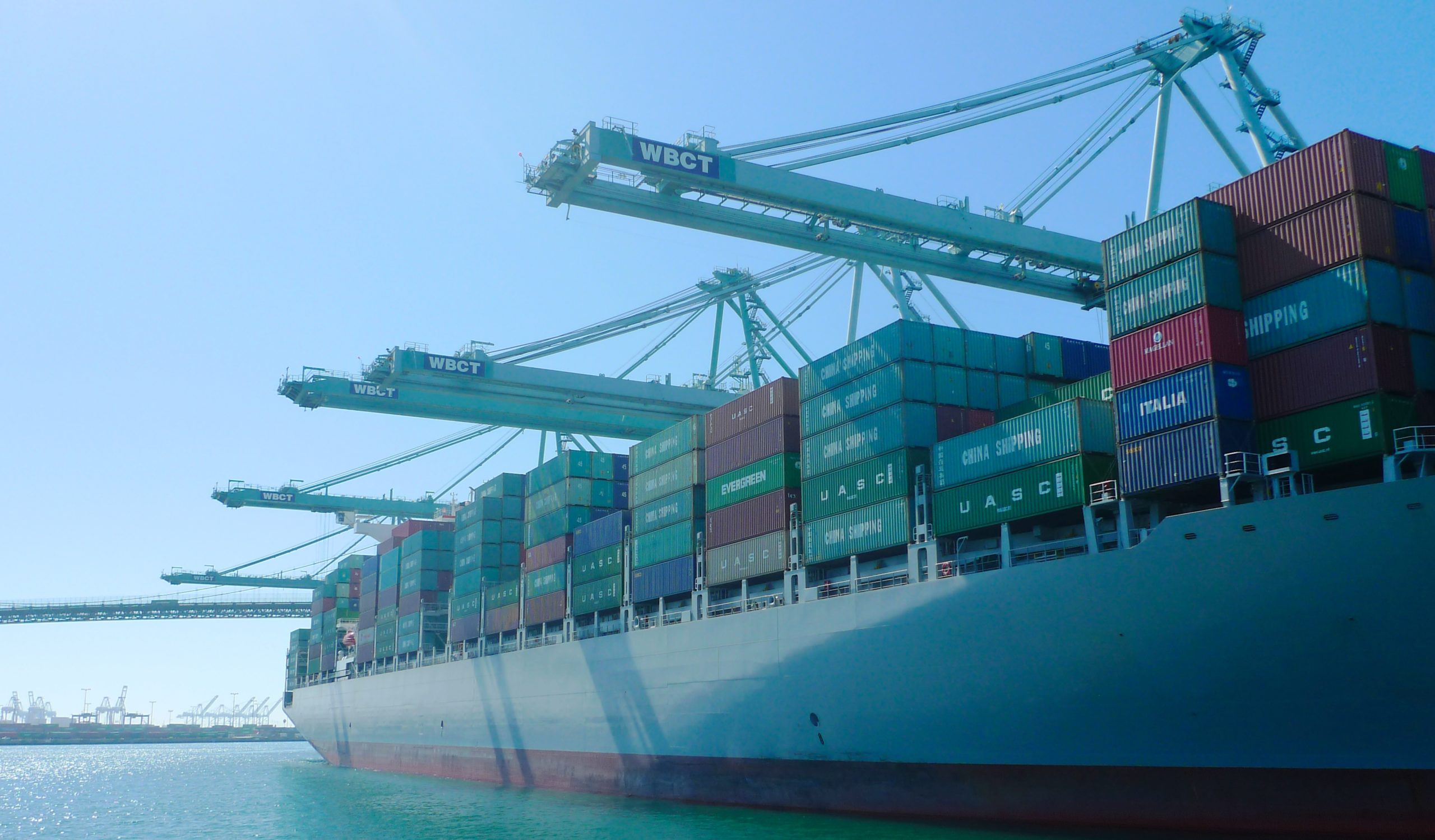
Thanks to computer-aided logistics, containers are stacked in the most efficient manner possible to streamline the loading and unloading process.
The computer-powered cranes can also use data modelling to better organise the containers, stacking them in a way that makes more sense, logistically, than their human counterparts. This accuracy also means more cranes can work in closer proximity.
The automation project is part of the Technology Advancement Program initiative, focused on increasing productivity across the board. Right now the port can transport about 30 containers per hour. The goal is to transport 40.
An electric highway

A proposed eHighway concept by Siemens which would provide a clean alternative to tractor-trailer traffic.
There’s still one big problem to solve — the elephant in the harbour, if you will. It’s the issue of what happens with all these goods once they leave the port itself. While the new changes at the port are designed to move the goods off the ships as quickly as possible, the way they get from the port dispersed through the country is still largely old-fashioned: Via rail or highway.
Rail is by far the most efficient way to move containers, financially and environmentally. About 40 trains leave the port every day on a network of rail lines that fan out from San Pedro, with goods arriving on the East Coast in about a week.
A much-needed improvement would bring even more rail lines below-grade to prevent freight congestion, and route more rail directly onto the docks. A proposed program would do just that, claiming to eliminate 1.5 million truck trips. But that’s not approved yet and has actually been fought by environmentalists.
By far, the weakest link in the Port’s sustainability plan are the tractor-trailers, which are not only releasing dangerous levels of emissions, they’re creating crushing vehicular congestion in the region. Controversially, the port wants to widen and improve local freeways to make it easier for their trucks to navigate the area. Here, too, it’s experimenting with ideas that could be potential game-changers for ports around the world.
It’s really just a one-mile proof-of-concept at this point, but engineers are looking at building an electric highway (they’re calling it an eHighway), which would allow vehicles to travel the same route as the rail-based Alameda Corridor, powered by catenary wires above instead of gas. This would help get containers to a more robust rail hub where more of them could head overground via rail. And it would eliminate emissions completely.
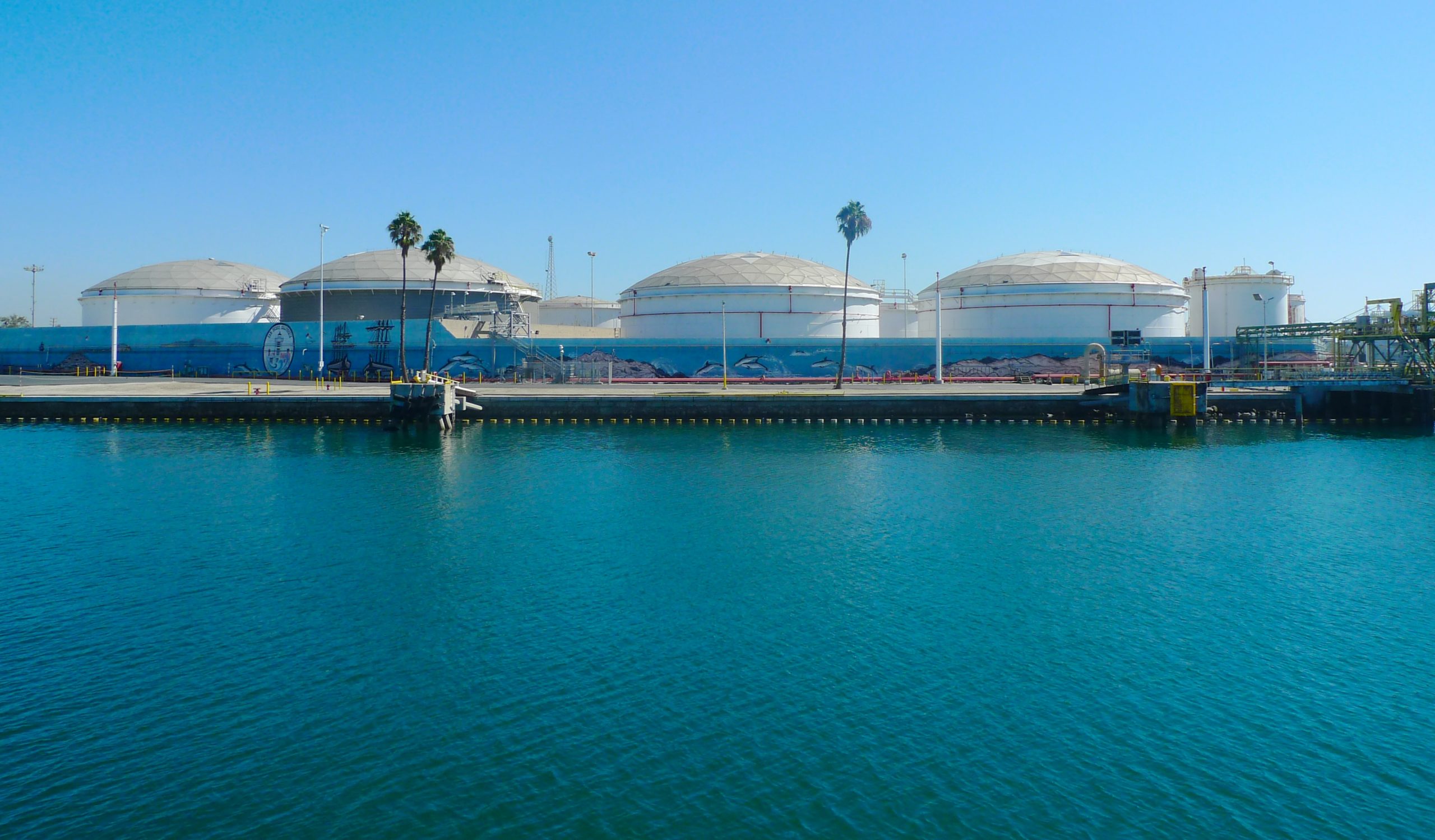
Another example of purpose-built infrastructure: Jet fuel shipped into the harbour is deposited directly into these tanks and pumped underground to LAX.
Of course, another solution is building infrastructure systems that don’t require any kind of motorised transportation. At the center of the Port are huge tanks filled with gas and jet fuel. These are delivered to LAX via direct underground pipelines, taking dozens of trucks off the road every day.
Supersized shipping
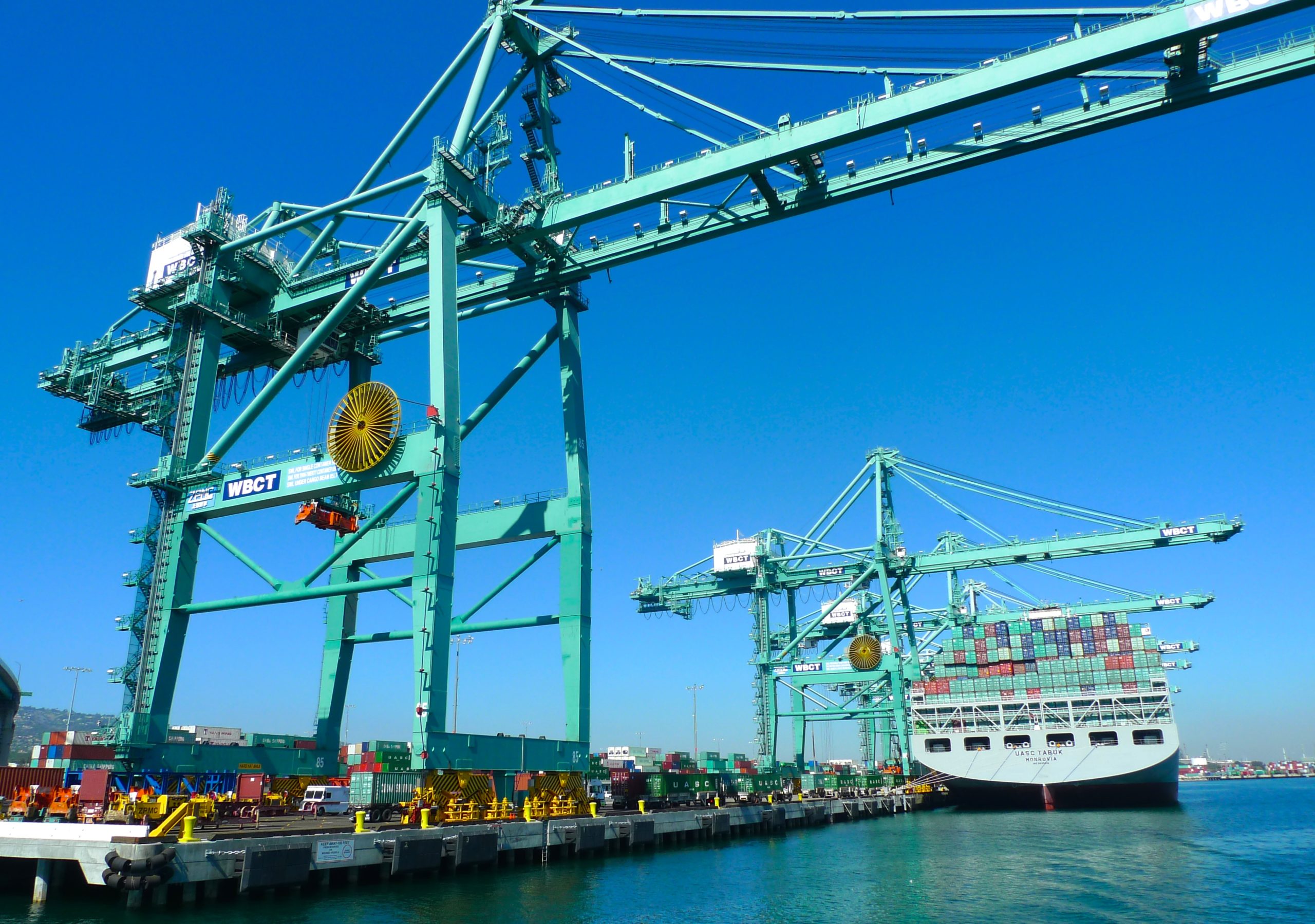
Note the yellow “extenders” below the crane, which help make them tall enough to service growing ships.
While the Port of LA remains a giant as US ports go, it’s struggling to keep up with the way global shipping is changing. Or, rather, growing. Ships are getting bigger. Way bigger.
Recently, the Main Channel was deepened to 16m to allow more of these megaships to enter the harbour. But the bigger ships also need bigger cranes. The cost of building or replacing one of the port’s 89 cranes is substantial. So instead, the port is adding bright yellow booster rigs below each crane which help to raise them higher.
You might have heard about the Mary Maersk, the biggest container ship in the world, which can carry about 18,270 containers. It’s too big to fit into the Port of LA’s harbour, width-wise. This would require a whole different level of improvements. The Panama Canal is currently expanding for this very reason, and LA will have to make bigger changes to keep up — while still pioneering environmental responsibility.
AltaSea, for instance, is a center for marine research and oceanographic tech that’s planned for City Dock No. 1, a century-old building at the very edge of the harbour. The complex will include a center to study sea life as well as the world’s largest tank specifically designed to study tsunamis.

The original shipping innovation at the Port, used today as a film backdrop
The organisation PortTechLA is working to attract more clean-tech related companies that can take up residence in an incubator. Of course, the port can’t transform all its operations into high-tech innovations. At the center of the port are a cluster of adorable 1920s-era cranes dwarfed by the nearby docks. This is the historic shipping yard and it’s still used quite regularly — as a film set. This is, after all, Los Angeles.
